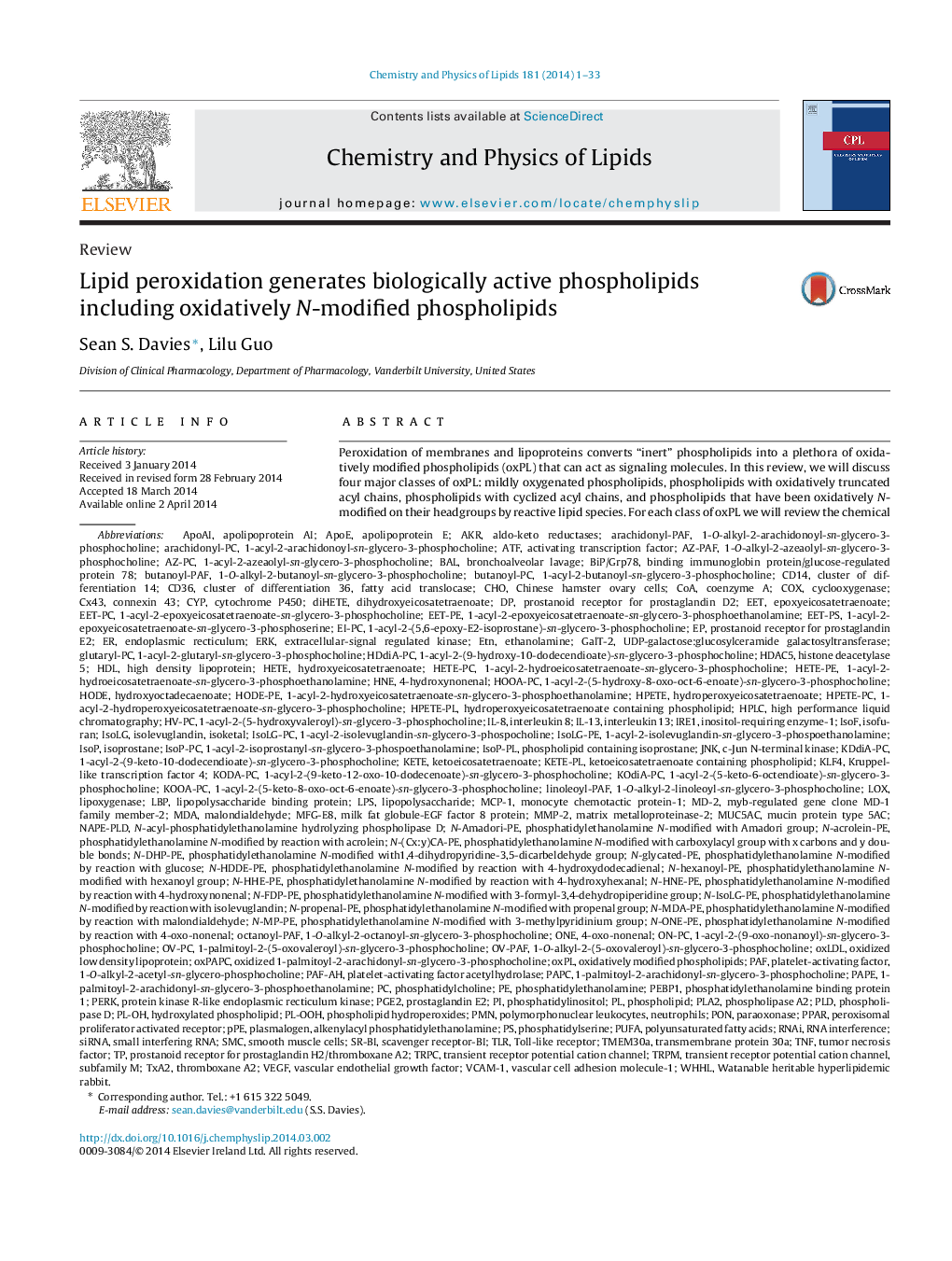| کد مقاله | کد نشریه | سال انتشار | مقاله انگلیسی | نسخه تمام متن |
|---|---|---|---|---|
| 1253327 | 1496296 | 2014 | 33 صفحه PDF | دانلود رایگان |
• Oxidatively modified phospholipids can be grouped into four broad categories based on their structures.
• Elevated levels found in a variety of physiological and pathophysiological conditions.
• Identified molecular targets include G-protein coupled receptors, scavenger receptors, and nuclear hormone receptors.
• Biological effects include platelet activation, modulation of immune cell function, cell migration, and cytotoxicity.
• Identified catabolizing enzymes include platelet-activating factor hydrolase, aldo-keto reductases, and paraoxonase.
Peroxidation of membranes and lipoproteins converts “inert” phospholipids into a plethora of oxidatively modified phospholipids (oxPL) that can act as signaling molecules. In this review, we will discuss four major classes of oxPL: mildly oxygenated phospholipids, phospholipids with oxidatively truncated acyl chains, phospholipids with cyclized acyl chains, and phospholipids that have been oxidatively N-modified on their headgroups by reactive lipid species. For each class of oxPL we will review the chemical mechanisms of their formation, the evidence for their formation in biological samples, the biological activities and signaling pathways associated with them, and the catabolic pathways for their elimination. We will end by briefly highlighting some of the critical questions that remain about the role of oxPL in physiology and disease.
Journal: Chemistry and Physics of Lipids - Volume 181, July 2014, Pages 1–33
